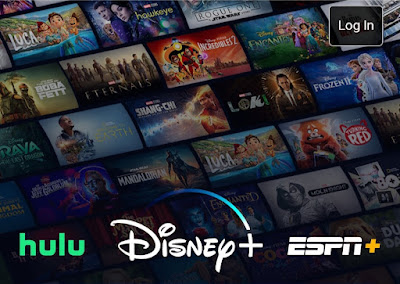According to projections made by an Irish company called Digital TV Research, the total number of people who subscribe to streaming services throughout the globe would increase by roughly half a billion accounts by the year 2027. However, the ranking would be completely thrown off: Disney + would move ahead of Netflix.
Despite Netflix's blues, the vein of subscription video on demand (SVoD) is far from drained. Quite the contrary: the number of subscriber accounts for streaming services globally will expand by over half a billion units by 2027, reaching 1.7 billion, according to predictions by Irish consultancy Digital. TVResearch.
The United States will remain the biggest market with 988 million members in total (that's three per capita!) when you take into account six platforms - Netflix, Disney +, Amazon Prime Video, HBO Max, Paramount + and Apple TV +. Above all, the nation of Uncle Sam will focus the majority of subscriber increase in volume.
Disney+ : The new OTP leader?
The standings, however, are about to be turned upside down: by 2025, Disney + will likely have surpassed Netflix in popularity. In April, the Los Gatos powerhouse shocked investors by reporting its first quarterly loss in subscribers in a decade. This was the company's first quarter with negative subscriber growth. When compared to his previous wave of data, which dated back to the beginning of the year, the head analyst of Digital TV Research, Simon Murray, reduced the rate of growth for Netflix by nearly half. His prior wave of study was from the beginning of the year.
Netflix anticipates that its subscriber base will increase by "just" 31 million units globally, bringing the total number of users throughout the globe to 253 million, despite a decrease of 4 million in the United States. Reed Hastings's firm would then be practically even with Amazon Prime in terms of subscriber count (252 million), while Disney Plus would take the lead with 274 million subscribers.
"During the height of the Covid crisis, growth remained at a healthy clip, thanks in large part to the use revolution that was started by Netflix. However, beginning right now, particularly in mature markets (of which France is becoming an increasingly important part), we are going to see a fight for the allocation of attention, as one expert in the business has warned. Netflix even reached to the point where it considered abandoning its founding myth of an ad-free subscription service in an effort to preserve its position as the industry leader.
According to reports in the American press, the company's plan to launch an advertisement-supported video on demand (AVOD) service might become a reality as early as the end of this calendar year. Disney Plus, on the other hand, is getting ready for it as well. The benefit is that by altering the pricing, a larger audience may be reached.
According to Tim Mulligan, an analyst at the British research company MIDiA Research, this is a "inflection moment" for the leader of the subscription video on demand industry because of various variables. According to him, a review of their model is something that must inevitably take place as a result of the rise in inflation and the increase in interest rates. However, the return to regular life after hygienic limitations carries with it the possibility of exacerbating a kind of "attention recession."
To combat this, it will be difficult to approve increases in tariffs. Even if Netflix and Disney did it again in the first few months of 2022, it would not change the outcome. According to the calculations of Simon Murray, in 2027, Netflix should still be in the lead in terms of revenue, with 34 billion dollars, which is a four billion dollar gain from 2017.
In spite of this, Netflix and its competitors will have no choice but to keep up the content investment race in order to differentiate themselves from one another. This will require them to explore a variety of genres and countries of production, as evidenced by the widespread acclaim received by the Korean dystopian series. "Squid Game" . Netflix has committed to maintaining its current level of investment in South Korea, which was around $500 million in the previous year.
An further driver of expansion is the capture of subscriber bases in developing countries. According to Digital TV Research, the rise of Disney + would be driven in particular by the deployment of its Hotstar platform in 13 Asian countries. This should result in the platform reaching 114 million accounts, which would represent 42 percent of the Californian group's global subscriber base but only 11 percent of its income. It makes perfect sense when you take into account the fact that Disney+'s overall average income per user ($4.35 per month between January and March) is approximately six times higher than Hotstar's average revenue per user.

